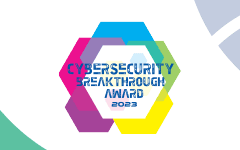Successful legacy modernization of identity governance and administration (IGA) is critical for any organization embarking on a digital transformation project. The benefits of replacing legacy systems are manifold; from optimizing business processes to reducing operating costs. Unfortunately, legacy system modernization usually requires much more than initiating a “lift and shift” of legacy systems to more sophisticated on-prem or cloud platforms. This is because in most instances “lift and shift” does not enable you to leverage the full potential of cloud-based services that improve performance and accommodate business growth, such as scalability and user experience enhancements. For most organizations, replacing legacy systems is uncharted territory. Every legacy system replacement strategy is as unique as the organization initiating it, so it goes without saying that there are countless legacy system modernization approaches. How can an organization get its IGA modernization project right the first time?
As with any new project, your modernization initiatives should start with asking important questions (and getting suitable answers) to ensure you are on the right path. In this post, we’ll get into the process of finding out what you need to know before you modernize legacy systems. First, we’ll help you determine what challenges you are trying to overcome by replacing existing systems. Next, we’ll articulate the questions for which you need answers before starting the process. This will help you identify the resources you’ll need, internal and external, to implement modernized systems. Finally, after you gain the insights needed to identify your challenges and the resources to overcome them, we’ll provide some advice on what you need to include in your plan to deploy modernized systems successfully.
Why organizations need to take on IGA Legacy Modernization
Most organizations face ongoing threats and obstacles that limit their ability to effectively manage identities and access their sensitive infrastructure assets. As these challenges become more sophisticated, legacy and in-house (home-grown) developed identity governance and administration (IGA) struggle to overcome them. These challenges include scalability restrictions, overly complex customizations, knowing who has access to what, the need for custom code to integrate with SaaS applications, not ensuring right-size access throughout the identity lifecycle and security flaws. The upkeep of these solutions is time-consuming, expensive, and resource-intensive, often requiring multiple full-time resources to manage them.
As requirements change and legacy solutions fail to meet challenges, organizations often find that overall agility and performance suffer. Legacy solutions rarely offer product innovation. Organizations must create a business imperative to identify and adopt a cutting-edge, intelligent IGA solution that can easily integrate across hybrid and multi-cloud environments to provide comprehensive identity management. The legacy system replacement strategy an organization develops must also be dynamic enough to satisfy an ever-changing set of compliance requirements. Here are some of the questions for which you must have satisfactory answers before choosing one of the approaches to legacy system replacement:
Question 1: Have you accounted for all the security and compliance challenges for which you are responsible?
As business requirements demand more from your architecture, security, and compliance are frequently the first casualties. Legacy modernization must create an IGA that helps organizations ensure that the right people have the right access to the right resources at the right time. This is crucial for maintaining security and compliance with various regulations (e.g., GDPR, HIPAA, SOX) and internal policies.
Question 2: Does your plan include processes for comprehensive identity lifecycle management?
The introduction of complexities like a growing remote workforce and high turnover can render existing systems ineffective. Modern approaches to legacy system replacement must include IGA solutions that provide automated processes for managing the entire identity lifecycle, from onboarding to offboarding. This reduces the risk of orphaned accounts (accounts that are not properly disabled after an employee leaves) and helps streamline the provisioning and de-provisioning of user accounts.
Can your system effectively manage access governance? The addition of new on-prem and cloud platforms to an organization’s infrastructure makes it difficult for legacy systems to define and enforce access policies, roles, and entitlements across the enterprise. Modernized systems must ensure that users are granted appropriate access based on their roles and responsibilities, reducing the risk of overprivileged accounts and unauthorized access.
Question 3: Does your system provide functionality that addresses Role-based access control (RBAC)?
Most legacy systems are not effective at creating roles with specific permissions and assigning these roles to users. Modern IGA solutions facilitate the implementation of RBAC and simplify access management by standardizing permissions based on job functions.
Question 4: Will your auditing and reporting capabilities satisfy compliance responsibilities?
Legacy and in-house IGA do not offer robust auditing and reporting capabilities. Modernized systems generate detailed access reports and conduct regular access reviews crucial for demonstrating compliance and identifying any suspicious or unauthorized activities.
Question 5: Can you quantify the time and cost savings that modernization offers?
As business requirements increase, legacy systems become more error-prone and time-consuming. Modern IGA automates managing identities and access to reduce administrative burden, minimize human error, and lower labor costs. In addition, modern IGA enables users to manage their own accounts, reset passwords, and request access to resources. This enhances user experience and reduces the need for IT intervention.
Question 6: Does your modern system effectively manage separation of duties (SoD)?
Historically, legacy systems do not manage SoD well. A modern IGA solution facilitates the enforcement of policies designed to prevent conflicts of interest by ensuring that no single individual has access to combinations of permissions that could lead to fraudulent or malicious activities.
Question 7: Is your system uniformly effective across on-premises, cloud, and hybrid platform environments?
Managing identities and access is more complex in cloud environments and legacy systems are not up to the task. Modern IGA solutions work well across on-premises systems, cloud platforms, and third-party applications.
Question 8: Does your system account for vendor and partner access management?
Providing temporary access to external vendors and partners can be a problem for legacy systems. IGA solutions enable controlled and audited access to external parties without compromising security.
Essential resources for implementing IGA legacy modernization
Once you know what problems you need to solve, the next step is identifying the resources you need to modernize your IGA legacy system. Here are the functionalities you must have:
- Automation. Your modern IGA solution must eliminate the manual effort required for functions like recertification and provisioning. The solution must automate the identity lifecycle and improve the provisioning process. Your administrators should also enable the automation of risk assessment and access certifications. This eliminates human error and guarantees that employees have access to the resources they need to be productive from day one.
- Visibility. A modern IGA solution must enable you to see who has access to what systems, who is requesting access, and which identities may be high-risk. Monitoring access rights must be easy to understand, include baked-in risk scoring, and simplify the investigation process. Administrators should be able to define mitigation processes and send certification campaigns when they detect violations. The solution should provide comprehensive logging to show a full audit trail of user access, including business justifications. It should also offer information to executive teams to assess the progress of the IGA program.
- Seamless integration. You must have the capacity to integrate IGA processes across the entire organization. You should have the capacity to easily integrate applications into a configurable connectivity framework without custom development or code. This functionality should include built-in data mapping configuration and support for industry-standard protocols like SOAP, SCIM, and REST and enable you to rapidly onboard your applications and cloud services.
Develop an achievable implementation plan for IGA legacy modernization
The final phase of a legacy system replacement strategy is implementation. Organizations that stick to old ways of doing things to avoid upsetting the status quo can end up with inefficient processes that do not meet future business requirements and do not provide the improved operational agility needed. Failure to adopt best practice processes might lead to unnecessary and complex customizations of your modernization project. Here are the principal steps you should follow:
- Identity lifecycle management planning. Configure your system to manage employees’ access rights automatically as they join the company, move departments, change roles, and leave the company. This process addresses a principal challenge: eliminating the risks of granting rights to systems that employees should not have permission to access.
- Access and certification planning. Ensure that end users can request access and managers can approve access to digital resources needed as quickly and efficiently as possible. This plan should include processes for Self-Service Access Request, ad hoc and periodic attestation, and single and multi-level approval workflows as well as automated provisioning and de-provisioning of users’ access.
- Business alignment planning. Here is where you pull it all together. User adoption of an IGA system relies on the system being relevant to the company and as easy to use as possible. Your organization must build the right, fit-for-purpose models for different roles, assignment policies, constraint policies, and context administration results. This ensures that you achieve the level of IGA system that will help you realize the intended ROI benefits of your modernization project right in the planning stage.
For a comprehensive explanation of how to implement a successful IGA modernization plan, get the IdentityPROCESS+ framework from Omada.




























